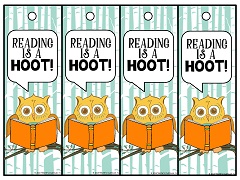
 Tone: A way of communicating information (in writing, images, or sound) that conveys an attitude. Themes in literature tend to differ depending on author, time period, genre, style, purpose, etc. Theme: According to Baldick, a theme may be defined as “a salient abstract idea that emerges from a literary work’s treatment of its subject-matter or a topic recurring in a number or literary works” (Baldick 258). Symbols typically recur throughout a narrative and offer critical, though often overlooked, information about events, characters, and the author’s primary concerns in telling the story. Broadly, representing one thing with another. Symbol(ism): An object or element incorporated into a narrative to represent another concept or concern. An author’s style can also be associated to the genre or mode of writing the author adopts, such as in the case of a satire or elegy with would adopt a satirical or elegiac style of writing. Style: Comprising an author’s diction, syntax, tone, characters, and other narrative techniques, “style” is used to describe the way an author uses language to convey his or her ideas and purpose in writing.
Tone: A way of communicating information (in writing, images, or sound) that conveys an attitude. Themes in literature tend to differ depending on author, time period, genre, style, purpose, etc. Theme: According to Baldick, a theme may be defined as “a salient abstract idea that emerges from a literary work’s treatment of its subject-matter or a topic recurring in a number or literary works” (Baldick 258). Symbols typically recur throughout a narrative and offer critical, though often overlooked, information about events, characters, and the author’s primary concerns in telling the story. Broadly, representing one thing with another. Symbol(ism): An object or element incorporated into a narrative to represent another concept or concern. An author’s style can also be associated to the genre or mode of writing the author adopts, such as in the case of a satire or elegy with would adopt a satirical or elegiac style of writing. Style: Comprising an author’s diction, syntax, tone, characters, and other narrative techniques, “style” is used to describe the way an author uses language to convey his or her ideas and purpose in writing. 
For instance, an author might write a narrative from a specific character’s point of view, which means that that character is our narrative and readers experience events through his or her eyes.
Point of View: The perspective (visual, interpretive, bias, etc.) a text takes when presenting its plot and narrative. Plot: The sequence of events that occur through a work to produce a coherent narrative or story. Imagery can refer to the literal landscape or characters described in a narrative or the theoretical concepts an author employs.  Imagery: A term used to describe an author’s use of vivid descriptions “that evoke sense-impressions by literal or figurative reference to perceptible or ‘concrete’ objects, scenes, actions, or states” (Baldick 121). Alastair Fowler uses the following elements to define genres: organizational features (chapters, acts, scenes, stanzas) length mood (the Gothic novel tends to be moody and dark) style (a text can be high, low, or in-between depending on its audience) the reader’s role (readers of a mystery are expected to interpret evidence) and the author’s reason for writing (an epithalamion is a poem composed for marriage) (Mickics 132-3).
Imagery: A term used to describe an author’s use of vivid descriptions “that evoke sense-impressions by literal or figurative reference to perceptible or ‘concrete’ objects, scenes, actions, or states” (Baldick 121). Alastair Fowler uses the following elements to define genres: organizational features (chapters, acts, scenes, stanzas) length mood (the Gothic novel tends to be moody and dark) style (a text can be high, low, or in-between depending on its audience) the reader’s role (readers of a mystery are expected to interpret evidence) and the author’s reason for writing (an epithalamion is a poem composed for marriage) (Mickics 132-3). 
Texts frequently draw elements from multiple genres to create dynamic narratives. For instance, comedy, mystery, tragedy, satire, elegy, romance, and epic are all genres.
Dialogue: Spoken exchanges between characters in a dramatic or literary work, usually between two or more speakers. This includes descriptions of the characters’ physical appearances, personalities, actions, interactions, and dialogue. Characterization: The ways individual characters are represented by the narrator or author of a text. Please use the links on the left-hand side of this page to access other helpful resources. We encourage you to read this list alongside the other guides to literary interpretation included on the OWL Website. This list and the terms included in it can help you begin to identify central concerns or elements in a work that might help facilitate your interpretation, argumentation, and analysis. This list is by no means comprehensive, but instead offers a primer to the language frequently used by scholars and students researching literary works. Included below is a list of literary terms that can help you interpret, critique, and respond to a variety of different written works. This handout gives a rundown of some important terms and concepts used when talking and writing about literature.








 0 kommentar(er)
0 kommentar(er)
